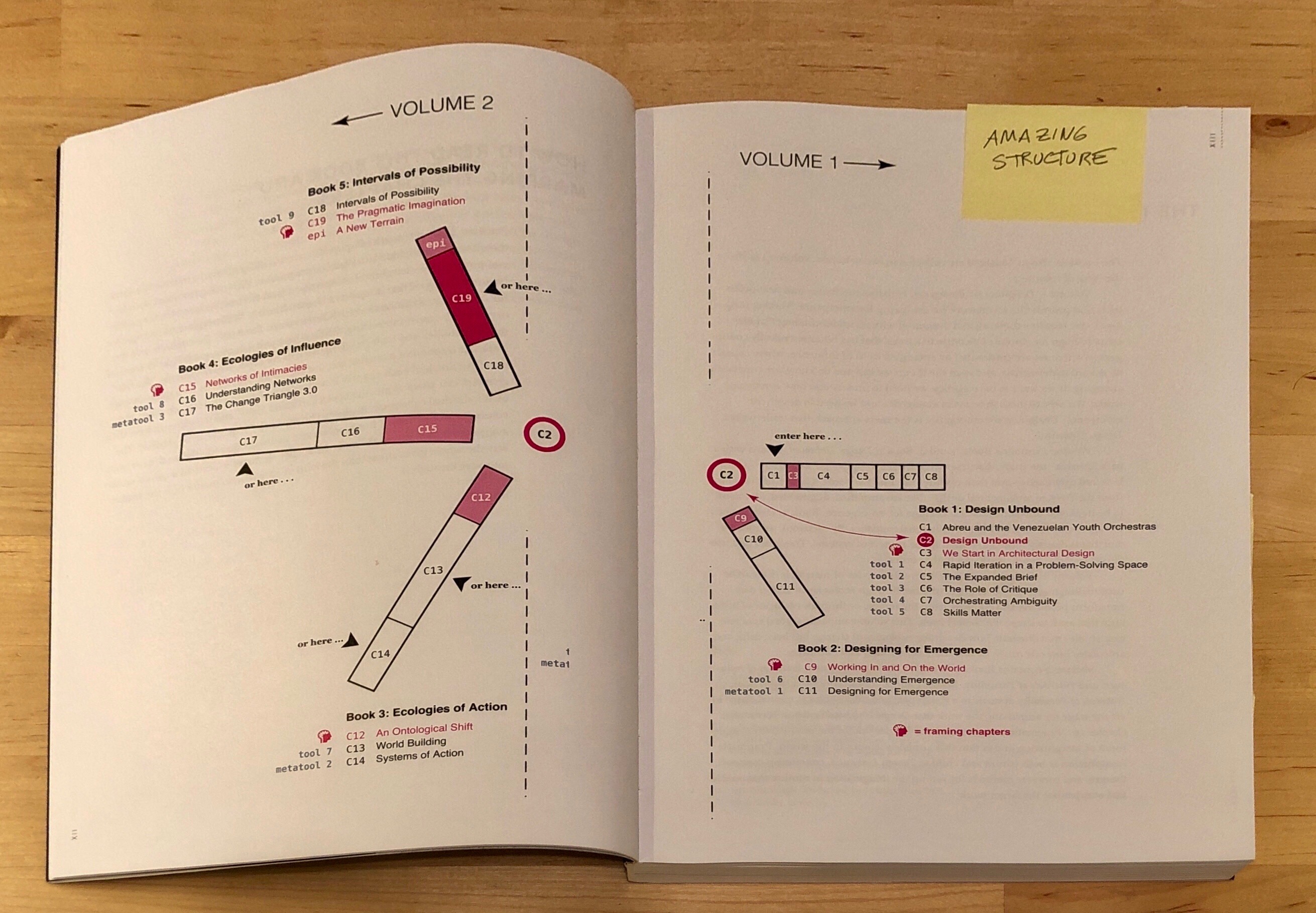Design Unbound: Designing for Emergence in a White Water World By Ann M. Pendleton-Jullian and John Seely Brown The MIT Press, 2018
Most people think design is about making better things: a more engaging website, a more usable gadget, a more satisfying experience, a bigger logo, etc. More enlightened folks will quote Steve Jobs, saying that design isn’t how something looks but how it works. While that sentiment is indeed a deeper take on design, it still misses an important point: design is not just about making things, it’s also a way of knowing and intervening in the world. And it’s a special way, since it allows us to tackle what Horst Rittel and Melvin Webber dubbed wicked problems.
Most designers (or the general public, for that matter) don’t see design in this light. This book aims to change that. The preface to the first volume spells out the works’ goal:
Design Unbound set out to define a new tool set for the world we find ourselves in — a world that is rapidly changing, increasingly interconnected, and where, because of this increasing interconnectivity, everything is more contingent on everything else happening around it — much more so than ever before.
The authors use the analogy of white water kayaking to describe complex decision-making under such dynamic conditions. Navigating a turbulent river calls for a completely different approach than doing so in a calm lake. “The interesting thing about white water rivers is that they are navigable,” they state, “but under new terms.”
What new terms? Design Unbound offers a set of design practices and mental models – “an offspring of complexity science, married to architectural design” — to help us navigate complex challenges. These “tools” include a reframing of design briefs, critique, ambiguity, skills, emergence, world-building, networks, and “intervals of possibility.” The book also features several meta-tools, which reframe design practice itself for work at a higher level of abstraction.
These concepts are presented in five books over two volumes. The authors suggest that the work doesn’t need to be read linearly, and offer a useful (and beautiful) guide to its content:

This is a map for pragmatic design-doing — not for making widgets better (or even better widgets), but operating at a much higher, systemic level: that of social, economic, ecologic transformation. Design enables us to engage these domains through abductive reasoning, a different way of knowing (and acting in) the world than the better-known modalities of deductive and inductive reasoning. I first encountered this powerful idea in Nigel Cross’s Designerly Ways of Knowing, where it’s presented in the abstract. Design Unbound offers concrete practices that allow us to put it in action.
The two volumes of this work comprise a rich and valuable framework for tackling some of our most pressing and complex challenges. I’ll be returning to its pages often, both in my practice and teaching.
Buy it on Amazon:
Amazon links on this page are affiliate links. I get a small commission if you make a purchase after following these links.



